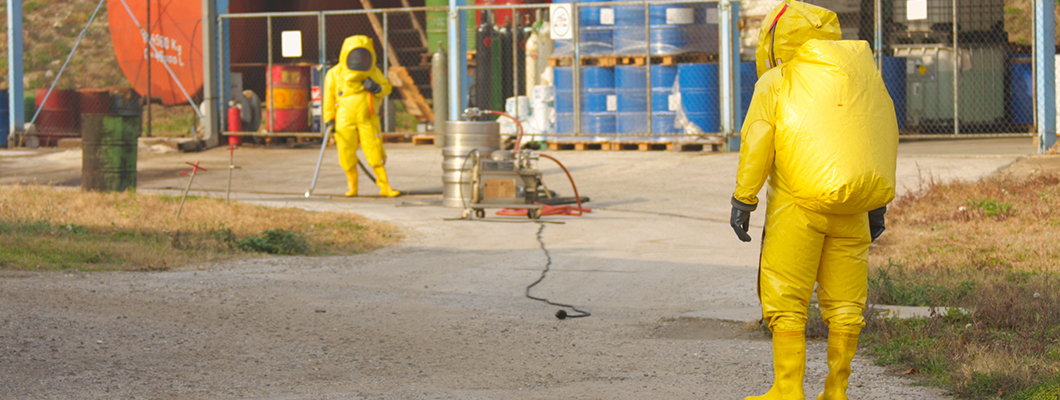Training Programs Offered
Prior to developing or conducting training, a needs analysis is conducted. Based upon the results of the analysis, we can design a training program to meet all of the appropriate regulatory requirements while minimizing your costs. We can also work with your staff to develop internal training capabilities for several of the less demanding training courses.
- Hazardous Waste Operations and Emergency Response (HAZWOPER)
- OSHA 29 CFR 1910.120 (General Industry) – OSHA 29 CFR 1926.65 (Construction)
- Hazardous Waste Site Worker—40 and 24 Hours
- Hazardous Waste Site Worker Annual Refresher—8 Hours
- Hazardous Waste Site Supervisor—8 Hours
- RCRA Treatment, Storage, and Disposal Facility (TSDF)—24-Hour Initial and 8-Hour Annual Refresher
- Emergency Response Operations (Minimum training hours specified in 29 CFR 1910.120(q)
- First Responder Awareness Level (Non-specified)—Typically 2 to 8 Hours
- First Responder Operations Level—8 to 24 Hours
- Hazardous Materials Technician—8 to 24 Hours (Prerequisite is maximum of previous level.)
- Hazardous Materials Specialist—8 to 24 Hours (Prerequisite is maximum of previous level.)
- On-Scene Incident Commander—8 to 24 Hours (Prerequisite is maximum of operations level.)
Wisconsin Department of Natural Resources (WDNR) Hazardous Waste Handling Training for Large Quantity Generators—4-8 Hours ( Includes Emergency Coordinator Training)
Confined Space Entry and Rescue—8 to 40 Hours
- OSHA 29 CFR 1910.146 (General Industry) – OSHA 29 CFR 1926.21 (Construction)
- Wisconsin Commerce 32 Wisconsin Administrative Code
Hazard Communication—2 to 8 Hours
- OSHA 29 CFR 1910.1200 (General Industry) – OSHA 29 CFR 1926.58 (Construction)
Department of Transportation (DOT) 49 CFR 172.704
- HM-126, Hazmat Employee Training—2-8 Hours Plus Task Specific
- Awareness/Familiarization
- Function Specific
- Safety Training
- Driver Training
- Refreshers required every two years
HM-181, Revised Hazardous Materials Regulations—8-36 Hours
Industrial Lift Truck Operator Training—4 to 8 Hours
OSHA 29 CFR 1910.178
Fall Protection—2 to 8 Hours OSHA 29 CFR 1926.503
Evaluation, Development and Implementation of Written Programs for:
OSHA 29 CFR
- General Industry – Construction
- 1910.38 – 1926.24 – Employee Emergency Plans and Fire Prevention Plans
- 1910.120 – 1926.65 – Emergency Response Plans
- 1910.134 – 1926.103 – Respiratory Protection
- 1910.146 – 1926.21 – Confined Space Entry
- 1910.1200 – 1926.58 – Hazard Communication
- 1910.1450 – Occupational Exposure to Hazardous Chemicals in Laboratories
- 1910.95 – 1926.52 – Hearing Conservation
- 1910.132 – 1926.28 – Personal Protective Equipment
- 1926.650 – Excavation
- 1910.1001 – 1926.1101 – Asbestos Management
- 1910.119 – Process Safety Management of Highly Hazardous Chemicals
Industrial Hygiene Services
- Comprehensive Job Hazard Analyses
- Personal Protective Equipment Surveys
- Indoor Air Quality Surveys and Monitoring
- Surveys for specific materials such as asbestos, lead, PCBs
- Ergonomic evaluations, management, analyses and remedial design
- Surveys for Possible Employee Exposures
- Noise Surveys and Remedial Engineering and Design
- Ventilation System Assessments
- OSHA Complaint or Notice of Violation assistance
Compliance Management Services
- Develop Integrated Environmental and Health and Safety regulatory monitoring program to ensure continued compliance
- Assist with Proper and Cost Effective management of waste products
- Conduct Periodic Multi-Media regulatory compliance audits
- Development of comprehensive record keeping systems, including computerized data bases
- Liaison with Regulatory Agencies
- Develop and Monitor Hazardous Waste Management and Disposal Activities
- Site Safety Management Services, including development of site specific safety plans, and functioning as site safety officer



